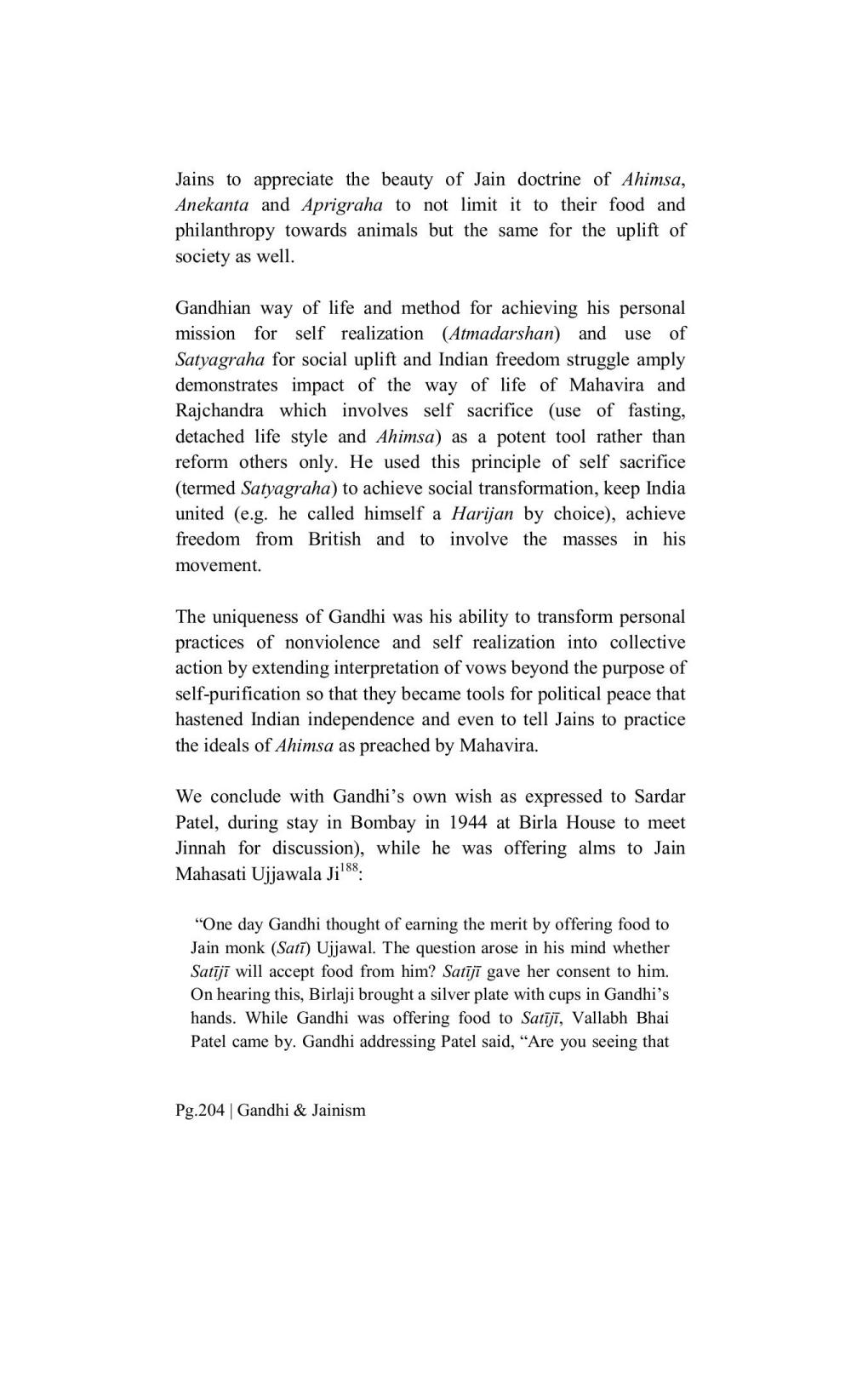________________
Jains to appreciate the beauty of Jain doctrine of Ahimsa, Anekanta and Aprigraha to not limit it to their food and philanthropy towards animals but the same for the uplift of society as well.
Gandhian way of life and method for achieving his personal mission for self realization (Atmadarshan) and use of Satyagraha for social uplift and Indian freedom struggle amply demonstrates impact of the way of life of Mahavira and Rajchandra which involves self sacrifice (use of fasting, detached life style and Ahimsa) as a potent tool rather than reform others only. He used this principle of self sacrifice (termed Satyagraha) to achieve social transformation, keep India united (e.g. he called himself a Harijan by choice), achieve freedom from British and to involve the masses in his movement.
The uniqueness of Gandhi was his ability to transform personal practices of nonviolence and self realization into collective action by extending interpretation of vows beyond the purpose of self-purification so that they became tools for political peace that hastened Indian independence and even to tell Jains to practice the ideals of Ahimsa as preached by Mahavira.
We conclude with Gandhi's own wish as expressed to Sardar Patel, during stay in Bombay in 1944 at Birla House to meet Jinnah for discussion), while he was offering alms to Jain Mahasati Ujjawala Ji 88.
“One day Gandhi thought of earning the merit by offering food to Jain monk (Satī) Ujjawal. The question arose in his mind whether Satījī will accept food from him? Satījī gave her consent to him. On hearing this, Birlaji brought a silver plate with cups in Gandhi's hands. While Gandhi was offering food to Satījī, Vallabh Bhai Patel came by. Gandhi addressing Patel said, “Are you seeing that
Pg.204 | Gandhi & Jainism




